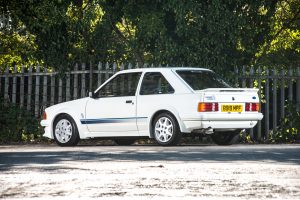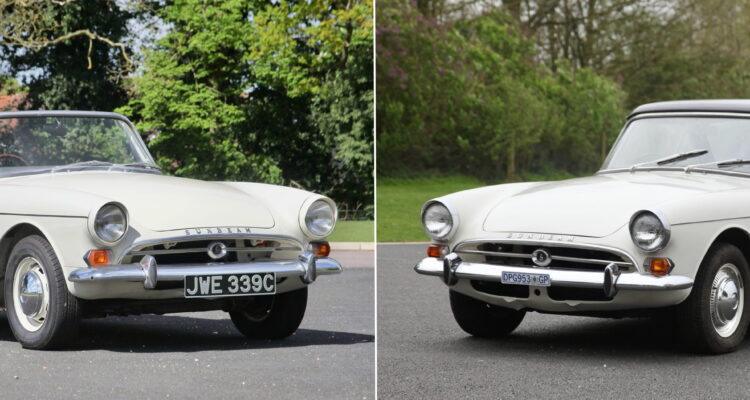Wrecks to Riches – The Escort RS Turbo
Some cars fall into a deep hole of neglect, one so deep in fact that it seems unlikely they’ll ever get out. But sometimes they do, and then some. A case in point would be the Ford Escort RS Turbo. Once the reserve of the boy racer, it’s now a five-figure commanding classic.
Some cars fall into a deep hole of neglect, one so deep in fact that it seems unlikely they’ll ever get out. But sometimes they do, and then some. A case in point would be the Ford Escort RS Turbo. Once the reserve of the boy racer, it’s now a five-figure commanding classic.
Ford has always been at the forefront of giving the people what they want, and that’s especially the case when it comes to performance models. There are few cars from the Ford stable, both past and present, that haven’t been ‘breathed on’ in the name of performance. Heck, even the Mondeo has been released in a number of performance versions. If Ford can make it fast, it will.

The height of this need to go faster was the 1980s. Ford gave us the XR cars, starting with the Fiesta XR2 and the Escort XR3. These cars were a revelation. They took a humdrum, normal car and added go-faster stripes, alloy wheels and of course, more power. You’d think that would have been enough, but it wasn’t, we wanted more. Enter stage left forced induction.
Whilst XR was a relatively new trim level in the ‘80s, RS wasn’t. RS, or Rallye Sport to give its full name, was an established harbinger of speed and power. We’d had the RS3100 Capri, the RS1600, RS1800 and RS2000 Escorts and of course, the Sierra RS Cosworth. RS was a mighty name, so if Ford was going to slap it on a car, it needed to be mighty. And it was.

Released in 1984, the Series 1 RS Turbo packed 132bhp with 180Nm from its turbocharged 1.6 litre four-cylinder engine. To put all the power down through the front wheels, Ford also fitted it with a limited-slip differential, uprated suspension and wide, seven-spoke alloy wheels. Then there was the way it looked, with bucket seats, the three-spoke RS steering wheel and externally, that wild body-kit consisting of flared arches, and deep matching chin and boot spoilers. Oh, and unless you were Royalty, you could only have it in white (Princess Diana had one, but it was black).

The RS Turbo was an instant hit, despite criticism around the way it rode – the handling was superb, but the suspension was less than forgiving on uneven surfaces. In the real world though, we didn’t care about a bit of a rough ride. We had a turbo, and that was all that mattered.
Ford was only planning to build 5,000 for homologation purposes, but due to demand it ended up building 8,604. Not only that, there was a second-generation RS Turbo released in 1986 to coincide with the then new Mk4 Escort. It was still a powerful car, but it was more road-focused rather than just being a homologation special. In making it ‘softer’ Ford contributed to the demise of the RS Turbo. The other factor of the time was the thieving element of society taking note of the RS. Fords of the early to mid-1980s could be stolen with a teaspoon, and the RS cars were no exception.

As theft rose, so did insurance premiums. Nobody wanted the RS Turbo, it was simply too much of a flight risk. As such, prices nosedived, and in the 1990s you could pick them up for £500 to £1000. And then came the final nail in the RS Turbo’s tin coffin – the people buying them for that money weren’t car fans, they were just people looking for a quick burst of speed. There was little concern given to restoration or maintenance. The RS Turbo wasn’t yet a classic, it was just an old car. Add in the fact they rusted for fun, you can see why numbers rapidly dwindled in the 1990s. They were rusting away, and if they weren’t, they were being driven into the ground.
The RS Turbo dwindled for a long time, clogging up the bargain pages of the classifieds, loitering at best with a price of £2,000. And that was for a mint one, mind. Soon though, things changed.

Here at Car & Classic we have the tools to look at adverts of old and with it, we can spot when things turned around for certain cars. In the case of the Escort RS Turbo, it all started around 2007/2008. Back then we had plenty for sale on the site, but the prices were struggling. £1,750 here, £1,500 there. And then things changed. In 2010 the average price was just under £5,000. By 2015 it was up to around £7,500 whereas today, the average is around £15,000. Though there are exceptions, like the car featured in the images here. Unrestored and with minimal mileage ( 5,568 on the clock), it sold a couple of years back for over £60,000. Not bad for a car we all ignored as ‘boy racer’ rubbish in the 1990s.

What’s caused the surge? The reality is that it’s people who were too young at the time to afford to not only buy one, but insure it too. Now their time has come though, and they can recapture their youth. It might seem like a bit of a cliche to buy a car for that reason, but we’re okay with it. There’s nothing wrong with recapturing your youth if you have the means. Just because you were deprived back then doesn’t mean you should be now. And if the side benefit of that is a car getting the classic recognition it deserves, then even better. The Escort RS Turbo was arguably the car that brought turbocharging to the masses, so it deserves to be saved and celebrated.
(Pictures care of Silverstone Auctions)


